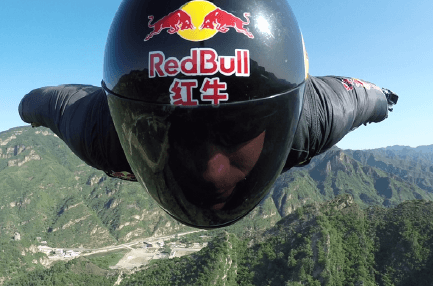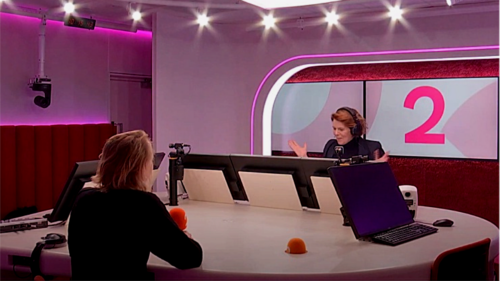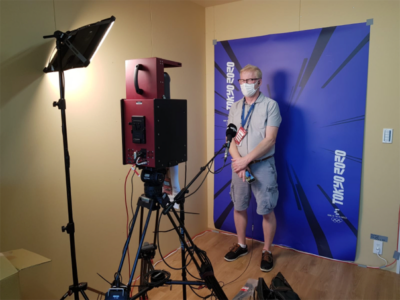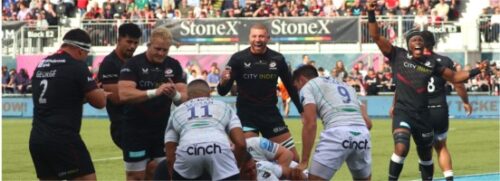Vislink Supports GoPro’s Live Broadcast of Jeb Corliss’ Wingsuit Flight Over the Great Wall of China
The Case
When GoPro, together with the World Wingsuit League (WWL), wanted to achieve their first-ever live point of view Wingsuit broadcast, they used the GoPro HERO4 camera with the Vislink HEROCast™ transmitter system. Vislink also provided technical assistance and their MDR multi-channel receiver system to enable this truly memorable and ground-breaking worldwide broadcast.
Jeb Corliss, GoPro-sponsored athlete and world-renowned wingsuit pilot, put his skills to the test by performing “The Human Arrow“ flight at the Great Wall of China on 1st June 2016. The feat was broadcast live on GoPro’s Facebook page and blog. It was also live on Tianjin TV in China and later picked up by many broadcasters around the world. The total estimated global audience was more than 1.25 billion with many watching live together with extensive newspaper coverage and links to the video of the event.
The hair-raising flight, which was 10 years in the making, required Jeb to drop from a helicopter and fly through the air at 120 mph to hit an apple-sized target suspended over the Great Wall of China.
The Challenge
Particular challenges when broadcasting this event live were linked to the extreme environment and the high speed nature of the descent with multiple body worn camera transmitters travelling in excess of 193km/h (120mph) without a clear line of site.
It was necessary to be able to capture RF transmission from ground level through to about 4000’ (1.22km) over a radius of 2km (1.2 miles) on uneven terrain. To do this the antenna sites were spread over a wide geographic area to capture uninterrupted coverage for all the cameras through this highly mountainous regon. The antenna fibre heads had to be battery powered, some with backup generators locally, as they were left in situ for extended periods.
The Solution
Live POV coverage of the jump was made possible using HEROCast™ technology designed by Vislink. It’s the lightest, most compact wireless HD micro transmitter available. HEROCast connects directly to the back of GoPro HERO 3+ Black and HERO 4 Silver and Black cameras and works with all the GoPro’s ecosystem of mounts to deliver the most versatile, mountable high-definition broadcast solution and is already changing the way broadcasters cover events by adding body worn and dynamic point of view shots. For the live aerial shots, two GoPro Hero4 Black cameras with the HEROCast BacPac transmitters were mounted on Jeb, one on his helmet with the standard antenna and the other chest mounted with an external 1 watt amplifier and omni antenna. A second wingsuit pilot, James Boole, followed with another HEROCast BacPac helmet mounted system and external Vislink 1 watt amplifier to capture the ‘in air’ wide shot.
The drop helicopter was fitted inside with a fourth discreetly wall mounted GoPro Hero 4 and HEROCast Tethered system with a 1 watt amplifier and the standard omni antenna extended onto the aircraft skid. Inside a HHT3 handheld receiver was used to monitor all four airborne feeds. Both the wingsuit pilots and helicopters were rigged using the standard HEROCast kit cables mounts and antennas.
For the receive system, Vislink provided a MDR (Modular Diversity Receiver) four channel receive system used with approx 2km of fibre optic cable to connect to four dual antenna receive heads placed at strategic
locations. Utilising Maximum Ratio RF antenna combining and seamless multichannel ASI packet switching between receive sites to feed each decoder was essential to ensure uninterrupted coverage of the event. The particularly rugged aspect of the location required receive sites to be left overnight and still perform faultlessly throughout the event. All signals were transferred to the outside broadcast van mixing and onward transmission.
The MDR system is specifically designed to receive multiple RF video channels to enable unrivalled coverage of an event. MDR’s modular card design makes it particularly well suited for TV Sports systems, multi-car “onboard camera” and multi camera POV systems where flexibility, reliability and ease of use are the key requirements. The plug and play card based system means cards can be easily scaled to suit the broadcast requirements. Its advanced real time diagnostics enable the operator to monitor all aspects of the system in an easy to use graphical display, essential for live broadcast environments.
The MDR receive system has already been used for over a decade covering the Moto GP Moto Motorbike series and is relied upon for many other international sporting events including the World Rally Championships, Americas Sailing Cup, World Super Bikes, International Golf, Formula E electric racing series, NHL Ice Hockey as well as events such as Horse and even Camel racing.
“The set-up of the HEROCast solution was really quick and simple and didn’t compromise any part of the flight safety. The high quality video from multiple camera angles brought this incredible live footage to the public for the first time. It could really change the way these events are covered in the future“.
Jeb Corliss, Wingsuit pilot
“Clean and sweet video was delivered all the way from just before Helicopter take off right through to Jeb landing. It was sent out by the TJTV OB truck to an additional 14-18 TV stations which carried the event live or delayed broadcast. We estimated a total audience reach of about 1.25billion, which is amazing. HEROCast video footage was used approximately 80% of the time while our cameras and transmitters were active. In other words, they grabbed and telecast almost everything we sent out when we were live, and we were live for the entire duration of the target hit flight on Sunday morning.”
Hemang Mehta, Senior Manager – Professional Products and Services at GoPro




